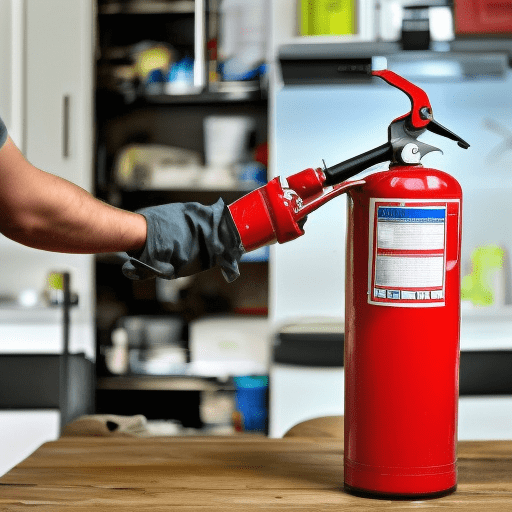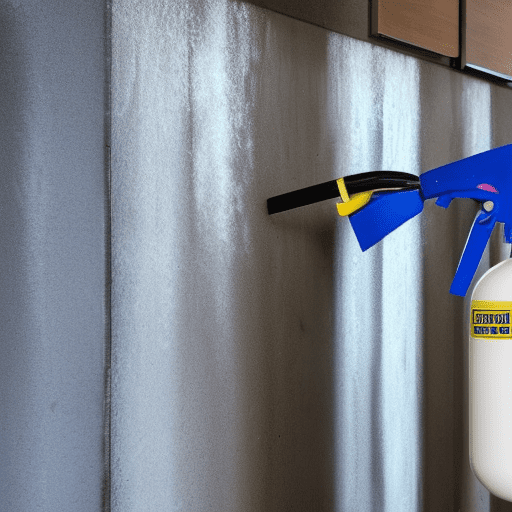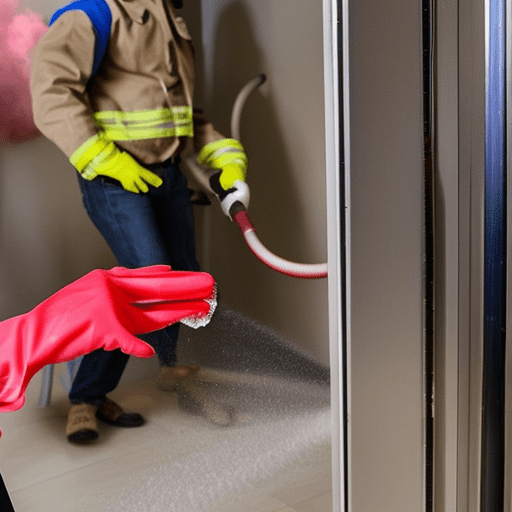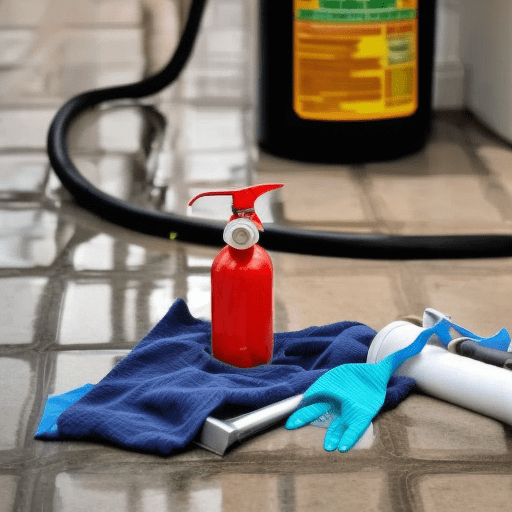How to clean fire extinguisher residue?
If you have ever had to use a fire extinguisher, you know that it can be a messy ordeal.
Not only does the extinguisher leave residue all over the place, but it can also be difficult to clean up.
In this blog post, we will discuss how to clean fire extinguisher residue using common household items.

It depends on the type of extinguisher you used.
Explain it o a child
If you used a chemical extinguisher (such as Halon), then you should neutralize the acid with a base, such as baking soda. If you used a dry chemical extinguisher (such as sodium bicarbonate), then you should sweep it up and dispose of it properly. If you used water, then just hosed it off and let it air dry.
How to clean fire extinguisher residue
Cleaning fire extinguisher residue depends on the type of extinguisher you used.

After discharging a dry chemical extinguisher, use a vacuum cleaner to remove the powdery residue.
If a water or foam-based extinguisher was deployed, first use heat to evaporate all moisture.
Afterward, you can brush, damp mop, and/or vacuum any remaining debris.
For wet chemical fire extinguishers, it’s very important to clean them immediately because residue from these substances can damage surfaces over time and prevent fire suppression technology from working properly.
Use caution in using water for clean up as this often forms slippery floors.
Finally, clear debris off walls using an electrostatically charged dust cloth or disposable cloths with warm soapy water.
How to clean residue from dry chemical fire extinguishers
Taking the time to clean residue from dry chemical fire extinguishers is essential for the safety of your home or workplace.
The best way to do so is to use a brush and water.
Start with a soft-bristled brush, adding just enough water for the powder and brushing it lightly towards the drain channel.
For tougher deposits, using an appropriate cleaner can help get rid of any stubborn residue.
If you don’t have access to a cleaner, dilute 1 part of white vinegar with 20 parts warm water before applying this solution with a soft-bristled brush.
After carefully scrubbing away all residues, be sure to rinse off any remaining solution with good-quality tap water and set the extinguisher outdoors in direct sunlight until completely dry.
Following these steps will ensure your dry chemical fire extinguisher is kept in top shape!
How to clean wet chemical fire extinguisher residue from class K fires
Cleaning wet chemical fire extinguisher residue from class K fires requires extreme attention to detail.
It’s important to follow the manufacturer’s instructions for the cleaning process and use appropriate personal protective equipment such as nitrile gloves, safety goggles, and a respirator.
Before beginning, it is also advisable to choose a well-ventilated area that won’t be exposed to further contamination from the residue itself.
Once you have selected an area, begin by using a dry absorbent material, such as cloth or paper towels, to lift off any dry sediment from the surface.
Then employing a pressure washer with water and detergent can help separate what has been left behind; however, be mindful not to apply too much pressure on affected surfaces as it could cause more damage.
Finally, if needed use a degreaser suited for materials in order to remove any difficult stains or deposits that were missed by the pressure washer.
Timely completion of these steps will ensure the safe removal of fire extinguisher residue in class K fires.
How to clean residue from a Halotron fire extinguisher
Cleaning your Halotron fire extinguisher is essential to ensure it is ready when an emergency arises.
To clean the unit, first, remove the pin and cap before emptying any remaining contents.
Then clean the nozzle and tube using a dry cloth.
Rinse the interior of the extinguisher by pouring in warm water while simultaneously pushing down the discharge lever.
Tip out all residual water, then place a small amount of lubricant inside and reassemble the parts.
Wipe off any excess lubricant and you’re ready for action! Remember to inspect your extinguisher regularly for maximum safety against fires.
The best way to clean up after using clean-agent fire extinguishers

Cleaning up after using a clean-agent fire extinguisher is essential to restoring the room or area affected by the fire back to its original condition.
However, it is important to remember that the process is complicated and requires special safety measures.
First, always wear protective equipment like chemical-resistant gloves and face masks before attempting any kind of cleanup.
The next step is to vacuum or wipe away all the particles from the surface of the walls and floors.
After that, you should use absorbent materials – such as sawdust or polyethylene flakes – to pick up any remaining excess liquid from the surfaces.
Finally, all furniture should be moved and dried off with shop vacs or fans.
Don’t forget to properly dispose of all wastes, making sure it doesn’t seep into nearby tracts of land!
Following these steps can help ensure successful clean-up after using a clean-agent fire extinguisher.
Precautions to take when cleaning up a discharge of fire extinguisher residue
Cleaning up a discharge of fire extinguisher residue can be a dangerous task, and proper precautions should be taken to ensure the area is safe for cleaning.

It is important to check for additional hazards such as combustible gases or smoke in the area before beginning clean-up, and so-called “non-water soluble” foams such as those found in Class B fire extinguishers may require specialized respirators to ensure safety.
To protect the eyes during clean-up, protective glasses or eyewear should always be worn and it may even be necessary to wear full-body protective gear depending on the size of the residue and its hazardous composition.
Lastly, because of the potential health hazards involved with prolonged exposure cleaning should only ever be undertaken by qualified personnel and it is best to contact experts whenever necessary.
Article Sources
Jacks of Science sources the most authoritative, trustworthy, and highly recognized institutions for our article research. Learn more about our Editorial Teams process and diligence in verifying the accuracy of every article we publish.
